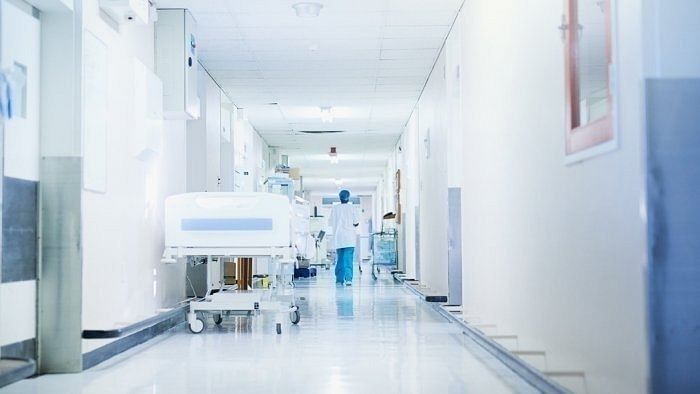
Central government medical colleges are short of more than 3,000 doctors, the Union health ministry informed the Parliament on Tuesday, without giving any explanation on why the authorities are unable to find out doctors even for hospitals in metro cities.
The doctor-patient ratio also remains lower than the WHO recommendations of having 100 doctors per lakh population. For India it is only 77 per lakh even though the number of MBBS and post-graduate seats in medical colleges witnessed a steady rise in the past seven years.
Responding to a written question in the Rajya Sabha the Union Minister of State Bharati Pravin Pawar shared a detailed list of vacancies in the central government hospitals.
Also Read | Economic Survey: Nearly 40% rise in nurses’ availability at PHC, CHC in last seven years
While the issue of faculty shortage at all the 22 new AIIMS was well known, even well established hospitals like AIIMS (221), Ram Manohar Lohia (113) and Safderjung hospitals (220) and Lady Hardinge Medical College (81) in Delhi, JIPMER (170) in Puducherry and PGI (146) in Chandigarh were also short of faculty.
However, the minister didn’t provide an explanation on why some of the best known government hospitals in Delhi and Chandigarh were not appearing attractive to doctors. But experts outside the government do offer an explanation.
“One of the key reasons for unavailability of doctors in metro cities is having well equipped hospitals in the private sector with more emoluments. Such private hospitals provide the pull factor while the push factor comes from lower pay-scale in the government, bureaucracy and poor work environment,” K Srinath Reddy, former president of Public Health Foundation of India told DH.
Others pointed out that the all new AIIMS were set up too fast without planning for the faculty as a result of which they were getting only junior doctors and not the senior ones, who would prefer well-equipped private facilities with no bureaucracy.
The AIIMS Guwahati, for instance, has 33 sanctioned posts of professors, but the institute has only 5. Similarly there are only 7 additional professors (sanctioned posts 26), 18 associate professors (39) and 49 assistant professors (85). The data was again shared by the junior minister in response to another question without any explanation.
“The dedicated work culture in AIIMS, Delhi has been different due to a tradition built over decades. The new AIIMS do not automatically imbibe that culture as they have been birthed in a private sector dominant urban environment,” Reddy said.
According to the ministry, there are 358 government and 296 private medical colleges at the moment. The centre has plans to set up more medical colleges around existing district hospitals and referral hospitals and wanted to increase both undergraduate and post-graduate medical seats by several thousands.
